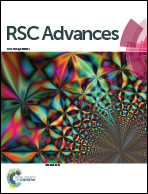Noble metal ions in CeO2 and TiO2: synthesis, structure and catalytic properties
Abstract
In the past four decades, CeO2 has been recognized as an attractive material in the area of auto exhaust catalysis because of its unique redox properties. In the presence of CeO2, the catalytic activity of noble metals supported on Al2O3 is enhanced due to higher dispersion of noble metals in their ionic form. In the last few years, we have been exploring an entirely new approach of dispersing noble metal ions on CeO2 and TiO2 matrices for redox catalysis. In this study, the dispersion of noble metal ions by solution combustion as well as other methods over CeO2 and TiO2 resulting mainly in Ce1−xMxO2−δ, Ce1−x−yTixMyO2−δ, Ce1−x−ySnxMyO2−δ, Ce1−x−yFexMyO2−δ, Ce1−x−yZrxMyO2−δ and Ti1−xMxO2−δ (M = Pd, Pt, Rh and Ru) catalysts, the structure of these materials, their catalytic properties toward different types of catalysis, structure–property relationships and mechanisms of catalytic reactions are reviewed. In these catalysts, noble metal ions are incorporated into a substrate matrix to a certain limit in a solid solution form. Lower valent noble metal-ion substitution in CeO2 and TiO2 creates noble metal ionic sites and oxide ion vacancies that act as adsorption sites for redox catalysis. It has been demonstrated that these new generation noble metal ionic catalysts (NMIC) have been found to be catalytically more active than conventional nanocrystalline noble metal catalysts dispersed on oxide supports.


 Please wait while we load your content...
Please wait while we load your content...